On Memorial Day I brought up a few aerials with a “memorial” theme to them, one being the former Little Traverse Bay Golf Course in Harbor Springs. While maybe not being the best designed course we had ever seen, it was an unforgettable landscape, and clearly a much-missed public golf course in an otherwise fairly expensive area to play the game. I got to take a tour of the current site last summer, which is now a great nature preserve known as the Offield Family Viewlands.
I’ve had a few discussions recently about the former LTBGC, along with the idea in general of “rewilding” a former golf course site. I wrote about the concept back in early 2024. As new writing on the subject appears and climate disasters continue to escalate, it feels like a re-post and a refresh are needed.
Living in Ann Arbor, there is naturally always an ideological discussion going on here around golf courses in the city - are they good neighbors? Do they help or hurt the community? Is there a better use for the green space? What do we do about the housing shortage?
One could easily guess where I stand in this debate, but I’ve been unusually close to the discussion thanks to my ward’s city council representative. A proposed housing development in the area a few years back brought the University of Michigan Golf Course into the fold when the University threatened a lawsuit, claiming the plan for the new housing, which would reside next to the 13th hole on the course, did not account for the runoff waste from the site that would spill over onto the golf course.
The response of this councilperson, who was a proponent of the project, was comedic, to say the least, and immediately made me question my previous vote for them. They said if it was up to them, the entire UMGC course would be bulldozed and turned into housing. Disregarding the questionable idea of paving over more than 200 acres of green space in the heart of the city, as a university property its future will never be up to city council. It was frankly just a foolish statement all around.
This antagonism towards golf courses, however, is much more threatening when it comes to the city courses of Ann Arbor. A recent city council vote on whether or not to purchase new gas-powered golf carts became, thanks to my councilperson, an impromptu debate on if the courses should exist at all while the city faces a housing crisis.
The vote for the golf carts passed, and the idea of closing the courses was never up for serious consideration, at least in regards to this particular meeting of the council. And yet it reflects the stance of many people who see no value in the game of golf, your Malcolm Gladwells of the world, perhaps. It’s a reminder that, while the game of golf may have survived the pandemic in better shape than other industries, housing and climate crises still leave the game in a perilous position.
The concept of “rewilding” former golf courses hit the national spotlight in early 2024 thanks to a New York Times article on the subject. That piece remains behind a paywall, but a more recent addition to the discussion was contributed by, fittingly, Rewilding magazine in January, as well as this feature by the BBC.
The New York Times article, if not the other two, was written by a non-golfer, but remains mostly fair in its analysis, all things considered. Against my better judgment at the time, and already knowing what I would see there, I dipped my toe into the comments section there to see what the temperature of the general public was. For me, that sort of crystalized the original thoughts behind this feature.
I’ve long had reservations about the sustainability of golf, and access to golf also remains an important topic to me. And while I would like to think that I am well-read on these topics, I am by no means anywhere close to an expert. This is just me, as someone who thinks and writes about golf, scanning the horizon for threats.
The Enemy Within
When I talk about sustainability in golf, I’m generally referring to the opposite of what is often called “championship golf”. That term is used in many ways by many different people, so a more fitting term for these purposes might be luxury golf. Or the Augusta-fication of golf, if you will, that took place between the end of World War II and was predominant until at least the late 90’s.
The golf boom after WWII placed an emphasis on conditioning. The nicest courses were those with the most manicured appearance. Golf sprouted up in areas like Palm Springs and Phoenix, among other unlikely places for green grass to exist. Luxury and exclusivity were the aspiration of many a club. It wasn’t until around the 2000s that we really saw a pendulum shift in the game, likely caused by various bubble bursts and the recession, and a realization that perhaps the game had grown too large, too quickly, and become too extravagant. A new emphasis on sustainable maintenance practices, lower costs, fewer new courses being constructed, and existing courses being renovated to resemble the architecture of its past were suddenly a part of the landscape.
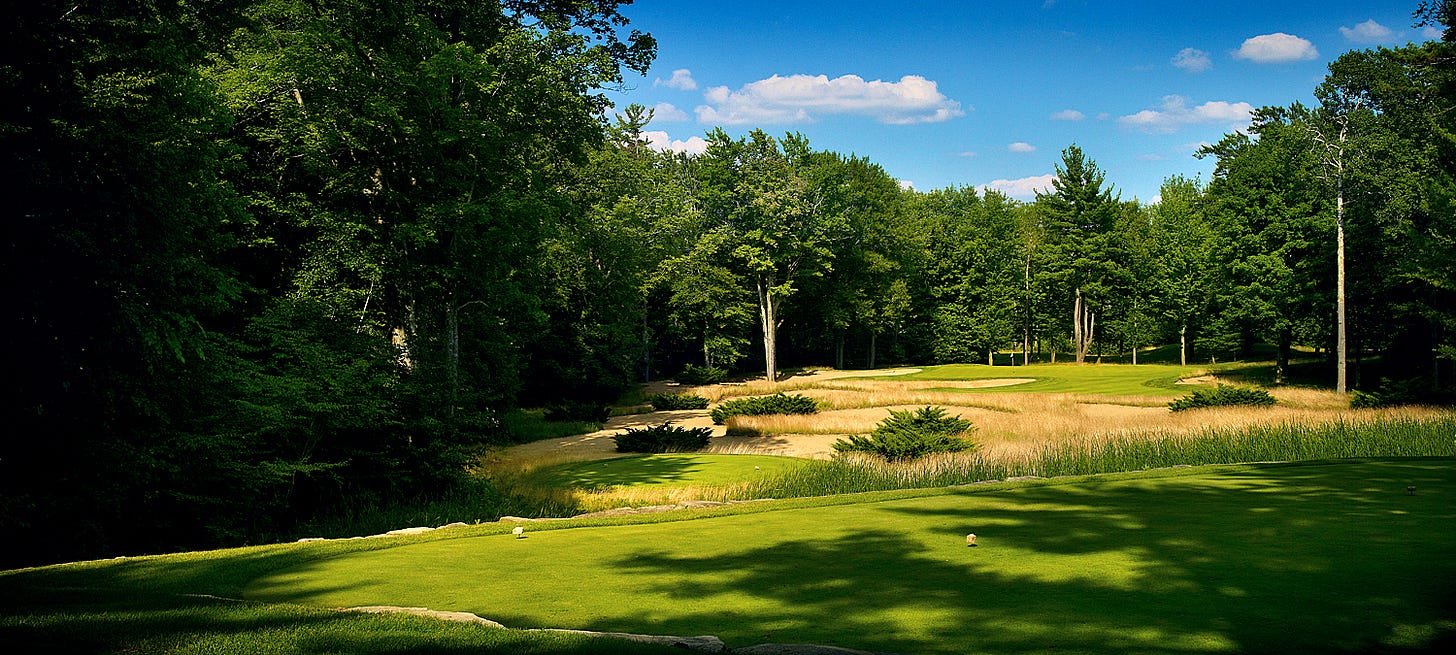
It hasn’t shifted all of the way, though. Too many golfers still rate a course based on how fast the greens roll. Too many courses still think the ideal is to provide a “championship test”, as opposed to being a responsible steward and an asset to its community. Golf should resemble it’s environment, and provide a sanctuary for native plant and animal life. While excessive water and pesticide usage, common perceptions of the non-golfing public of the game’s negative environmental impact, have become far less common, it still remains problematic for the game as resources dwindle.
This might be probably is a simplification of the debate over sustainability in golf. The point, however, is that the golf industry and those playing golf need to be on a unified front here. Perhaps we may see the game from different angles, or want to get different things out of the game, and yet our love of the game is what brings us together. If we don’t stay together, I’ve seen up close that some non-golfers, clinging to an outdated view of the game, are more than happy to unify in their opposition of golf.
A Good Walk… Nothing Spoiled
As the NYT article comments reminded me, non-golfers still view it as an elitist game, a waste of green space, and a waste of water. For all intents and purposes, golf in the eyes of America is stuck in the 1980s. Malcolm Gladwell did no favors with his take on golf in LA, a very specific view on ultra-private, tax-incentivized golf in an area with limited green space, which he naively extrapolated to apply to all golf everywhere in the country. He helped create an army of anti-golfers who won’t be happy unless every golf course is turned into green space.
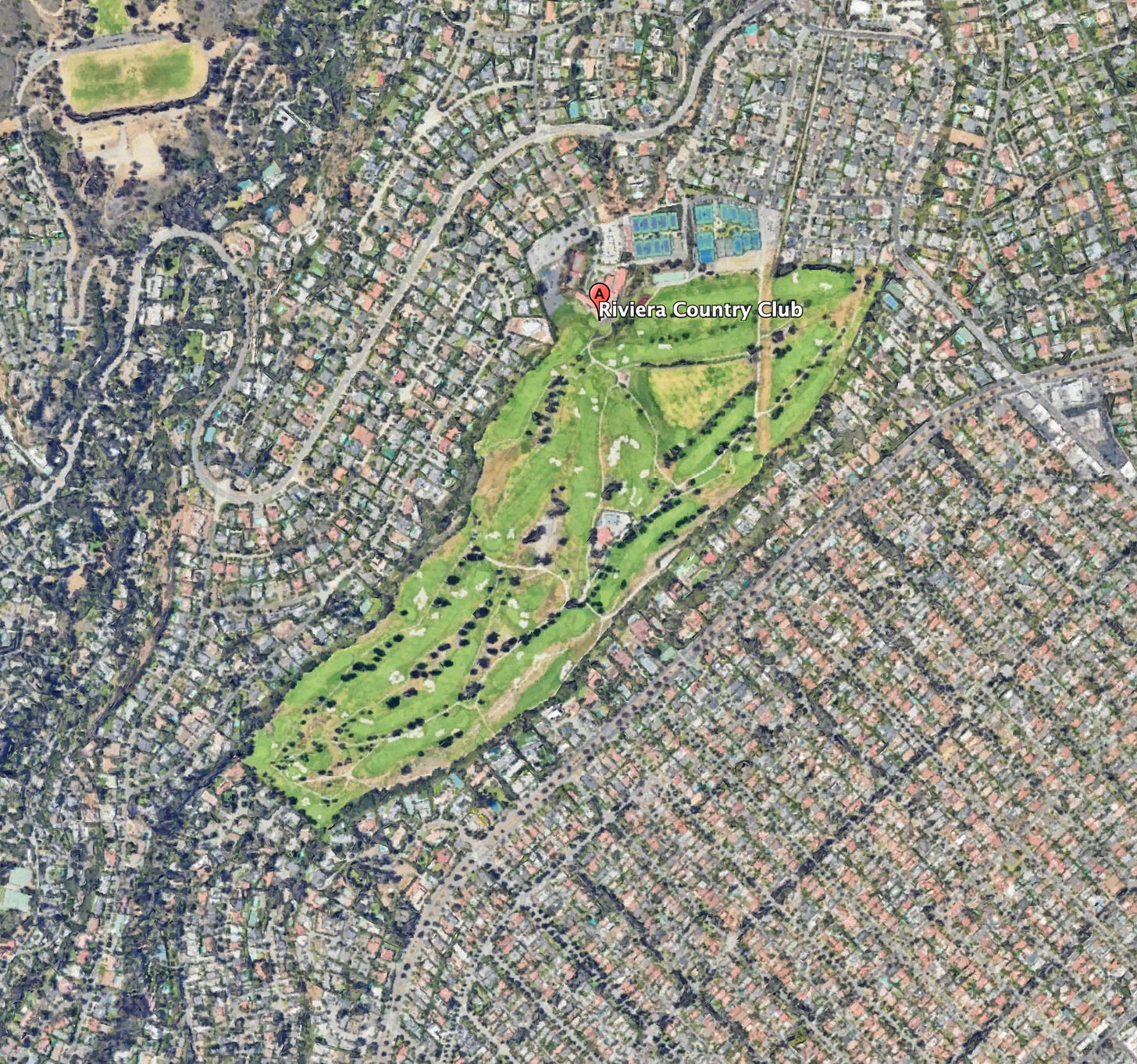
The idea that a closed golf course should easily become green space, however, is an illusion. We’ve seen plenty of courses close since the turn of the century, especially in Michigan, and very few turn into intentional and publicly-accessible green space. There were 28, according to the Times, between 2010 and 2022. As the article details, what happens more often is that the land gets paved over. The 36-hole Green Meadow Golf Course in New Hampshire, for example, a 375-acre property, was turned into a Target distribution center despite concerns in the area about proximity to residences and a loss of wetlands.
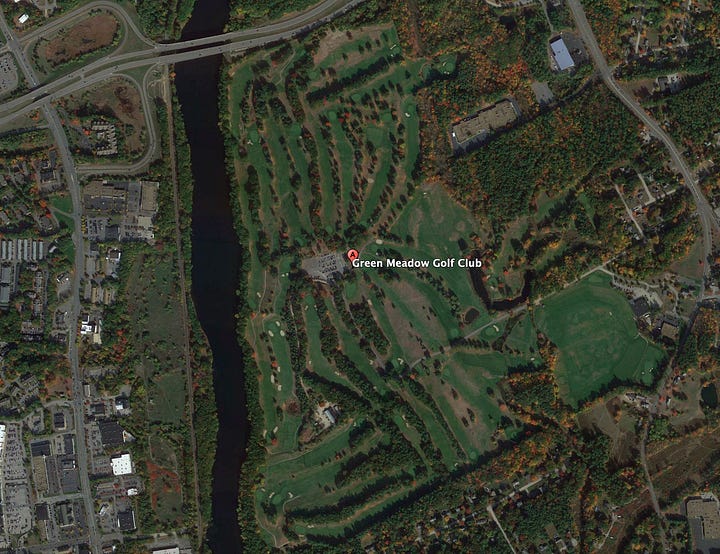

Let’s be clear, there are all kinds of positives and negatives to anything. The Target project looks like a devastating development for the land, but supposedly will create 2,100 jobs. In other situations where housing is limited, turning a golf course into housing might be a reasonable idea. But the promise of affordable housing rarely aligns with what we have actually seen when a course closes, where luxury housing usually moves in.
The case for keeping golf courses open, then, requires a counter narrative to the Gladwell Effect. Lumping all of golf into an elitist, gated affair, ignores the reality of most golfers who live for public golf. For older players, so many of these spaces offer the bulk of exercise that they may get in their lives, and is where they make and maintain connections with the community. Closing public courses eliminates those opportunities, in a time of loneliness and divisiveness when frankly we need those connections now more than ever.
For younger players, programs such as the First Tee that introduce new golfers to the game are almost exclusively held at public or even municipal courses. For many of these participants, golf could be one of their few experiences with recreation in nature, while offering valuable lessons in etiquette, leadership, and self-confidence.
And as for an elitist affair, you simply need to look at the participation numbers. In the Rewilding article an environmentalist argues, “Those urban green spaces should benefit everyone in the community, and not just the people who can afford the roughly $30 it costs for a round of golf.” That seems like a valid argument at face value, but then you look at a place like the aforementioned Green Meadow that was producing 80,000 rounds per year. As great as the Offield Family Viewlands are, can they expect 80,000 visitors per year, or even 40,000?
There are also environmental positives of golf courses that are not being considered. A modern trend has been building golf on top of superfund sites, landfills, and other pieces of land that were otherwise “dead”, helping turn them once again into usable sites, and in some cases, bringing them back to life. And then there is the simple fact that without the existence of a previous golf course, there likely wouldn’t be green space there to “rewild”. It would have been paved over and developed long ago. Whether people like it or not, golf preserves green space.
In addition to preserving green space, golf is one of the few uses of that green space capable of breaking even or turning a profit. As noted in the NYT article, turning closed courses into green space requires money. Like millions. The land needs to be purchased, rehabilitated, and maintained, which can cost as much or more than it would to simply build a new golf course there. The Santa Monica site featured in the NYT article, was sold for $7 million before being donated to UC Santa Barbara, and then required $16 million in grant money to be restored. And even then, a portion of that land was retained by the owners and sold for housing development. More locally, the Little Traverse Conservancy was made possible by the Offield family, whose wealth is derived from the Wrigley legacy.
The Rewilding article documents the transformation of the former Prospect Lake GC in Vancouver Island, BC, undertaken by a nonprofit called Power to Be. The article mentions that maintenance of a golf course can run between $500,000 and $1,000,000 annually, while unironically earlier mentioning that the property is run on a $1 per year lease thanks to the couple who owns the property, and tallied $3.8 million in funding in 2023 to support programming and other initiatives. A generous lease and lots of fundraising are key factors to the success of public green space. Is that model sustainable?
While I am trying my best to defend golf here, let me be clear that if a golf course needs to close, my preferred outcome for the property would almost universally for it to be preserved such as the Offield Family Viewlands. But with the level of funding that is needed for green space rehabilitations, it remains a pipe dream for anyone who thinks this will become the norm or a reasonable expectation for every golf course in America. A closed course without a well-funded green space initiative is destined to turn into either a development or, at best, a field of weeds.
I’m firmly in the shrink-the-game camp, from the perspective that golf needs to be sustainable from a maintenance standpoint, and needs to be as accessible as possible both to golfers and to the general public as a green space. In my upcoming part 3 of my Detroit Golf Series, I hope to highlight the public golf courses nationwide that are leading the charge on that front. If the responsible use of golf course land ever becomes the overwhelming norm for the game, I think we could then, in a unified voice, tell the Malcolm Gladwell-ites in the comment sections to take a hike. Preferably on shared hiking trails through the golf property, of course!




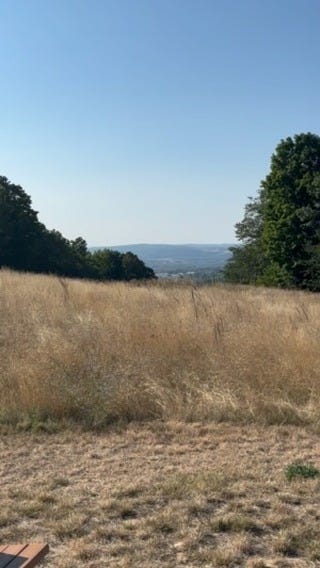
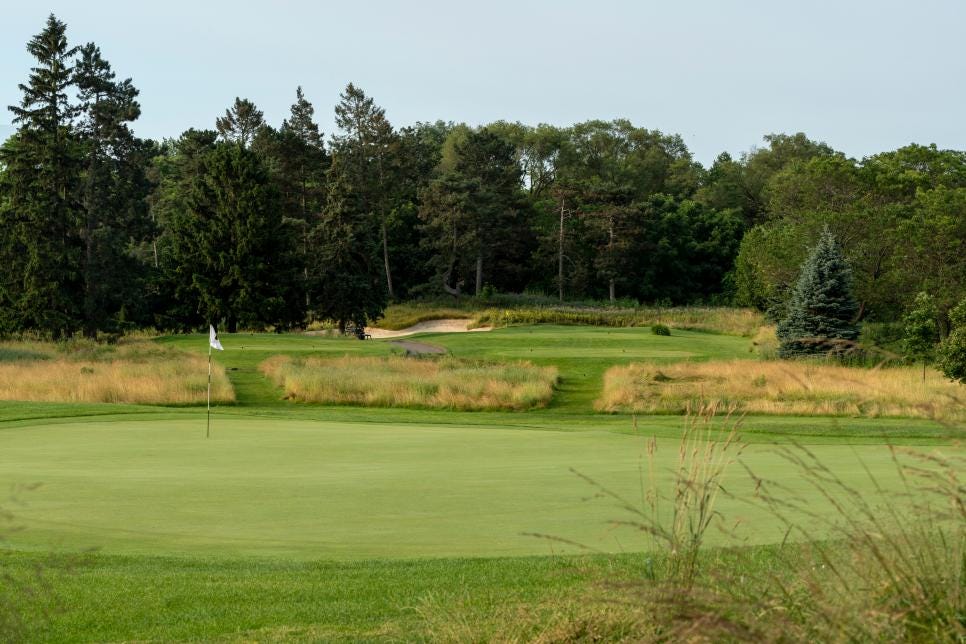
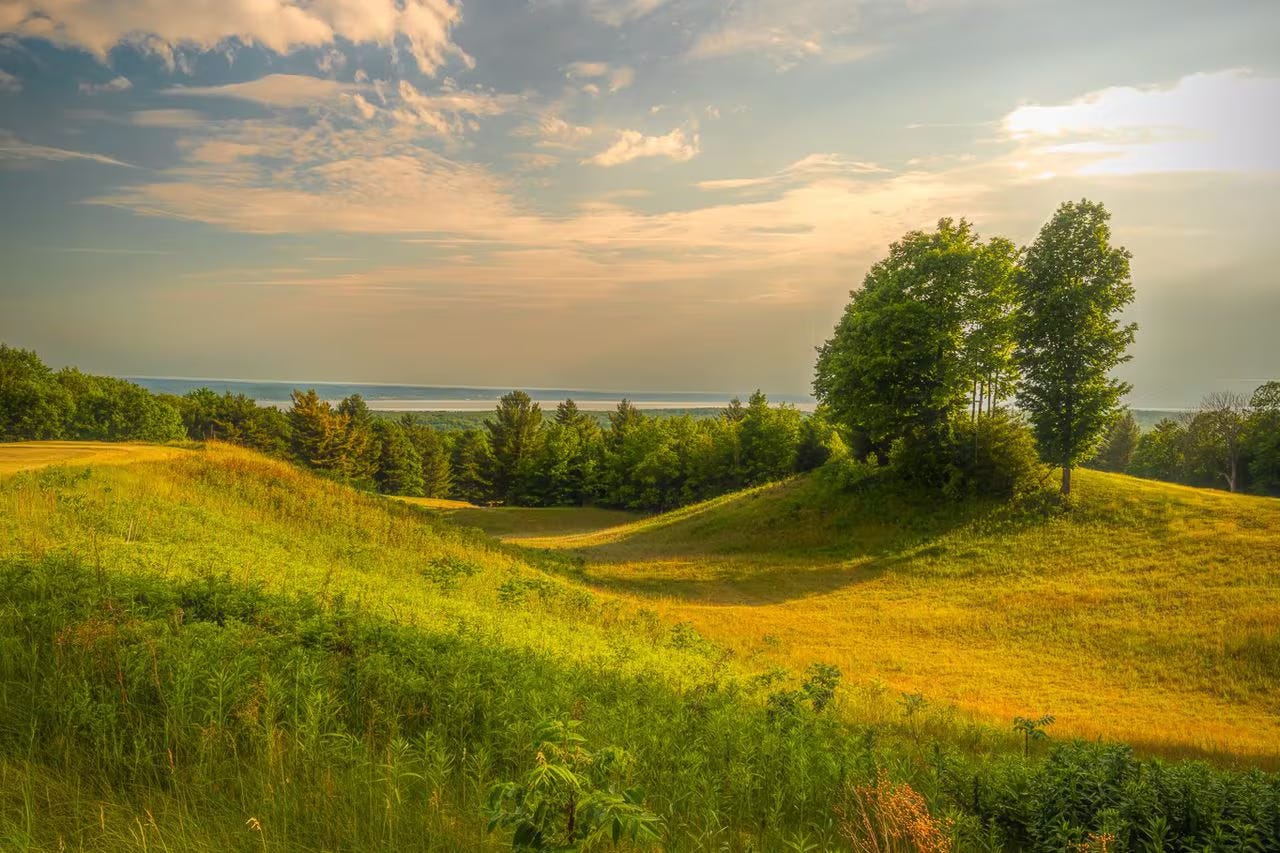
Fantastic rebuttal of Gladwell (whom I normally enjoy) and a pragmatic response re green spaces. I agree LA’s private club scene is unique and a poor foundation for extrapolation. Talk about unsustainable! But is that golf in its truest form? Of course not.
If Augusta represents the zenith of American, unnatural, and exclusive golf, is St Andrews the other end of the spectrum? I think of the traditions of golf as far more palatable to the general public than the way it is played here. There’s no better representation than the Home of Golf.
Can you imagine if AGNC was open one day a week for people to…walk their dogs? The game should find a middle way by returning to its roots, where it can.
Many good points.